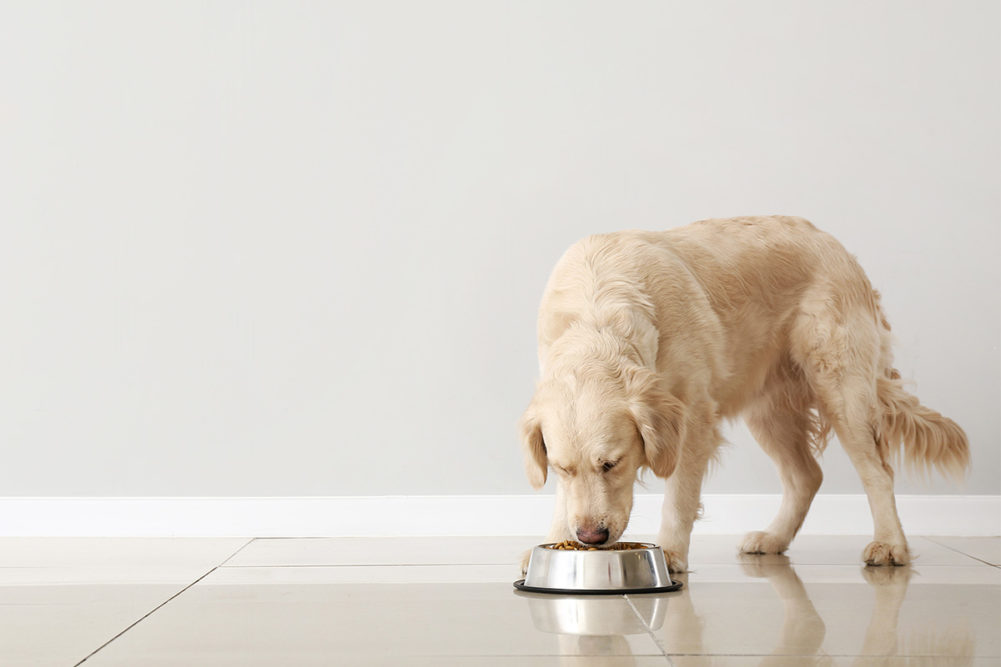CHAMPAIGN, ILL. — The Association of American Feed Control Officials (AAFCO) is seeking public commentary through March 1 regarding a proposed “controlled copper” claim for dog food. The proposed claim involves a maximum of 15 mg copper per kg DM and a maximum of 3.75 mg copper per 100 kcal of metabolizable energy for dog food formulas designed for one or more life stages.
The 11-person Workgroup was assembled to identify the need to reconsider copper guidelines in AAFCO’s Model Regulations for Pet Food and Specialty Pet Food. The original copper regulation described a “low copper” claim, which could imply to consumers that the food contained copper levels below the minimum requirements, according to the Workgroup. To avoid confusion, the group has proposed a revision to the claim to strike “low copper” and similar wordings in favor of “controlled copper.”
In the end, the Workgroup voted 6-4 in favor of the proposed claim, and the final report has been passed on to AAFCO’s Pet Food Committee (PFC) to determine if the claim is appropriate.
“By a slim majority, the Workgroup recommends PFC establish the regulation for a ‘controlled copper’ claim on dog foods…” the report stated. “It is within AAFCO’s mission to provide clarity to consumers, promote consistency in the marketplace, and support animal health, all of which is accomplished with this regulation.”
Both the Pet Food Institute (PFI) and American Feed Industry Association (AFIA) submitted statements for the Workgroup discussion, with both expressing concern and opposition to the proposal.
“In the interest of pet health, consumer trust and regulatory integrity, PFI cannot support the creation of specific nutrient claims for a disease where there isn’t evidence-based science,” PFI stated. “We support the majority opinion of the AAFCO expert panel which stated that ‘no maximum amount of copper should be set for complete diets for dogs until objective scientific data is available to establish such a maximum.’”
AFIA added, “Creating an AAFCO-sanctioned marketing claim regarding copper content in dog food based on an arbitrary value (as confirmed by Dr. Bill Burkholder) of 15 mg Cu/kg dry matter to address consumers’ desires rather than animal wellbeing is ill-advised.”
Copper in dog food has recently come into the spotlight due to a discussion within the veterinary community regarding a purported link between copper levels and the development of copper-associated hepatopathy (CAH), a type of liver disease, in dogs. According to BSM Partners, as well as the four Workgroup members who voted against the proposal, the “controlled copper” claim is not supported by sufficient scientific evidence, and more research is needed.
“Nutritional guidelines pivotal to the health of pets should only evolve based on thorough scrutiny and unbiased expert reviews,” wrote Stephanie Clark, Ph.D., Sydney McCauley, Ph.D., and Bradley Quest, DVM, of BSM Partners. “As leaders in the industry, fostering an environment where decisions are informed by comprehensive, rigorous research and ensure the wellbeing of pets remains the priority.”
According to the final Workgroup report, members who voted in opposition argued the claim would be “false and misleading,” as there is currently no proof that the proposed 15 mg copper per kg DM would be beneficial to dogs predisposed to or diagnosed with CAH. Additionally, they are also concerned that the claim could lead to nutrient imbalances as manufacturers target the new range for copper in finished products.
“There are very strong opinions on both sides of this issue,” wrote Karen L. Donnelly, DVM, chair of the Copper Claim Workgroup and veterinary medical officer with the US Food and Drug Administration’s (FDA) Center for Veterinary Medicine (CVM), in the final report. “All Workgroup members agree that more research about the effects of dietary copper on dogs’ health is needed, but in the meantime, PFC needs to decide if the proposed regulation is an appropriate and acceptable step towards addressing the issue.”
Read the full report here.
Stay up to date on the latest pet food processing industry headlines on our News page.



